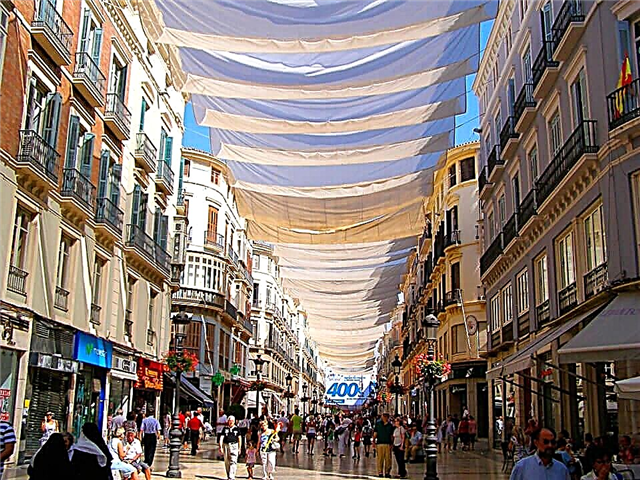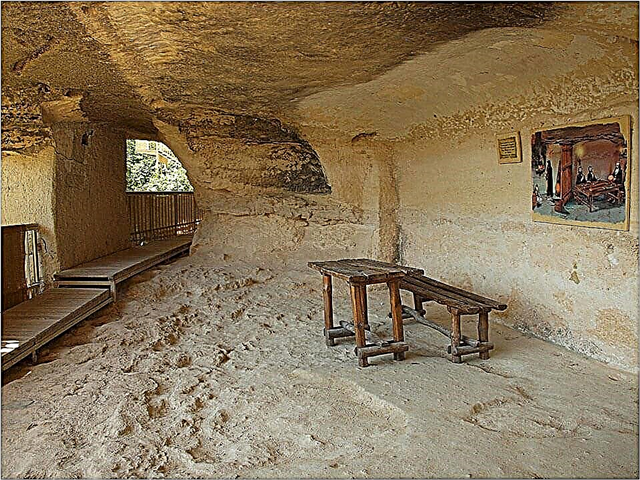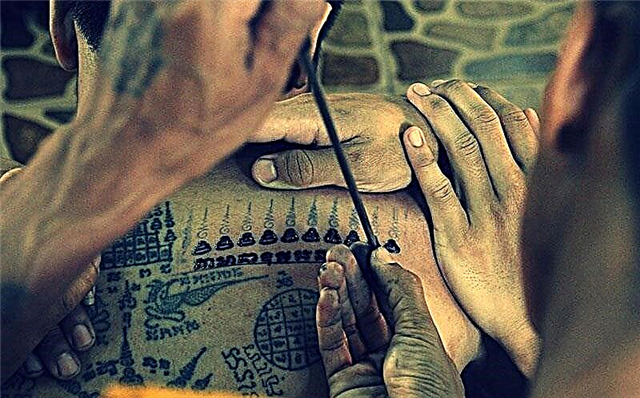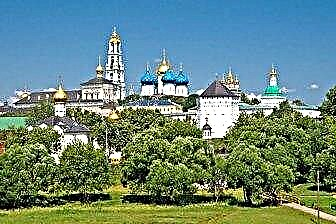If all the towns in Central Russia looked like Sergiev Posad, our country, perhaps, would not know the end of tourists. This city is not only one of the most picturesque and interesting on the Golden Ring route, but also the center of Orthodoxy and the spiritual life of the entire region.
Undoubtedly, the main attraction is the incomparable Trinity-Sergius Lavra, sparkling with golden domes in the rays of the bright sun. This complex includes so many churches that one day will not be enough to see them. And what pies and fish pies are baked there! Many tourists come from Moscow just to enjoy fresh monastery baked goods. Local kvass, which has no equal anywhere else, has gained no less fame.
Do not ignore museums, squares and streets - in Sergiev Posad it is picturesque and good everywhere, wherever the road leads.

The best hotels and hotels at affordable prices.
from 500 rubles / day
What to see and where to go in Sergiev Posad?
The most interesting and beautiful places for walking. Photos and a short description.
Trinity-Sergius Lavra
Today, the Trinity-Sergius Lavra is not only the largest and most famous monastery of the Russian Orthodox Church, but also an important spiritual, cultural, educational and pilgrimage center for all Orthodox Christians in Russia. The monastery was founded in 1337 by Sergius of Radonezh, his relics are preserved in the Holy Trinity Cathedral of the Lavra. During the period of feudal fragmentation, the monastery played one of the key roles in the politics of the principalities of North-Eastern Russia, being the support of the authorities and the people. The architectural ensemble of the monastery was formed in the XIV-XIX centuries: it includes more than 50 buildings and 10 temples. Today the complex is under the protection of UNESCO.

Assumption Cathedral
The temple was erected by order of Ivan the Terrible in 1559. Its construction lasted 26 years, and as a result, the king did not wait for its completion. Separate work on decoration and painting continued until the 18th century. The building was designed in the image and likeness of the temple of the same name in the Moscow Kremlin, the difference from the latter is only in the details. The interior space is decorated with biblical frescoes by Yaroslavl masters. An unforgettable impression is made by the luxurious five-tiered iconostasis.

Trinity Cathedral
The main temple of the Lavra and the most ancient structure preserved on its territory. It was erected in the 15th century by the will of Patriarch Nikon in honor of the founder of the monastery - Sergius of Radonezh on the site of a wooden church. In architectural terms, the building is a four-pillar cross-domed church of relatively small size and belongs to the monuments of early Moscow architecture. It is here that the relics of the reverend founder of the Lavra are kept.

Spiritual Church
The construction of 1476, erected by craftsmen from Pskov by order of Vasily III. The architects were sent to the Lavra after they refused to restore the Moscow Assumption Cathedral. The Dukhovskaya temple is small in size and resembles a watchtower in shape - it was actually used as a point for observing the surroundings. The church bell tower is a unique architectural structure in Central Russia.

Church of the Nativity of John the Baptist
The gate temple of the Lavra, under which the arch of the main entrance is located. This building is the first to meet visitors who decide to go inside the monastery. The building was built in 1699 and consecrated in the name of the patron saint of Tsar Ivan Alekseevich Romanov (Ivan V). The last restoration was carried out in 2008-2010, as a result of which the church acquired its modern pictorial appearance.

Church of St. Sergius with the Refectory
The refectory church occupies a special place in the architectural complex of the Lavra. It is the largest and undoubtedly one of the most picturesque structures of the monastery. The skillful painting of the outer walls and the delicate stone carving of the columns make it look like a luxurious royal palace. The church was erected in 1692 to commemorate the 300th anniversary of the death of Sergius of Radonezh. The entrance staircase leading to the canopy covered with a hipped roof appeared in 1734.

Smolensk Church
The consecration of the Smolensk Church took place in 1753 in the presence of Empress Elizabeth. The building was built according to the project of D. V. Ukhtomsky in the style of the Elizabethan baroque. Its appearance contrasts somewhat with the rest of the architectural buildings of the Lavra, which are characterized by a more traditional, Russian style. The temple is a small cylindrical building topped with a dome with a cross.

Bell tower of the Trinity-Sergius Lavra
The new bell tower was built in the 18th century to replace the old one, which by that time no longer fit into the architectural ensemble of the monastery. The tower reaches 88 meters in size, which makes it one of the tallest in Russia. The dominant style of the building is Baroque, but in its appearance you can also observe elements inherent in classicism. Some of the bells of the belfry were cast in the 15th century and are still in use today.

Vvedensky and Pyatnitsky churches
The Pyatnitskaya and Vvedenskaya churches are located nearby - they are located outside the fence of the Lavra at the very walls. Both buildings date back to the middle of the 16th century. Until 1610, the churches were parish, then, as a result of the Polish-Lithuanian invasion, they were significantly ruined. After the renovation, the building was taken over by the convent. At the end of the 19th century, they were added to the courtyard of the Lavra.

Elias Church
Ilyinsky temple is located on one of the city streets, towering over the bank of the Kelarsky pond. The building was built in the second half of the 18th century in the Pereslavl Baroque style at the expense of the townspeople. Earlier in its place there were wooden churches, dilapidated over time and dismantled. The temple was not closed or destroyed during the Soviet era - it was the only active parish in the vicinity.

Sergiev Posad Museum-Reserve
The museum complex was established in 1920 to streamline the architectural and historical heritage of Sergiev Posad. It includes the main building and the local history building, the sacristy and the horse yard. The main building houses collections of Russian painting and arts and crafts. The local history building is a building of a former kindergarten in 1937, built in the style of constructivism. Here you can see archaeological and historical expositions.

Museum complex "Horse yard"
"Horse yard" is located at the walls of the Lavra on the banks of the White Pond. It was erected in 1790 on the site of the monastery's wooden stables, where at that time more than 700 horses were kept. Today, within the walls of the complex, there are museum expositions dedicated to folk crafts and creativity, the rich history of the region, various branches of decorative and applied arts.

"Trading Rows" on Krasnogorskaya Square
The complex of buildings is located in the center of the city and stands out for its unusually bright appearance among other buildings. The building is made of red bricks and decorated with decorative turrets, weather vane and other elements. It was erected near the walls of the Lavra at the very beginning of the 20th century according to the project of A.A.Latkov in the neo-Russian style. Previously, this place housed wooden merchants' shops.

Palace of Culture. Yu.A. Gagarin
A concert hall for almost 900 spectators, the main stage of Sergiev Posad. Modern equipment allows holding a variety of events within the walls of the building. It houses a theater, folk choir and dance studios. The structure is a classical style building, decorated with monumental columns and statues. In front of the Palace of Culture on the square, jets of a fountain are gushing.

Toy Museum
The exhibition was started by the local collector N.M.Bartram in 1910. The institution itself opened in 1918 in a city mansion that had belonged to the widow of a local industrialist before the 1917 Revolution. The museum presents exhibitions of Russian folk toys, products by masters of Western Europe and Asia, children's portraits, New Year and Christmas decorations, and much more.

Museum of Peasant Life "Once Upon a Time"
Thematic exposition organized by the local artist V. Bagrov on the territory of a traditional Russian house with carved architraves (his workshop is located nearby). The founder of the collection is a big fan of antiquity. The exhibition consists of the usual household items of a peasant family: dishes, clothes, tools, jewelry, handicrafts, toys.

Exhibition Hall "Bells of Russia"
2015 Museum dedicated to the history of bells. This is the only exhibition of this kind in the world, which includes these signaling (or musical - as you like) instruments. That is, here you can not only watch, but also listen to different shades of sound. As part of the excursion, visitors are given a full-fledged concert in which a variety of bells are used.

Church-archaeological office
The museum exposition at the Moscow Orthodox Theological Academy, which contains collections of icons, church antiquities, paintings, graphics, coins, as well as old books, both printed and handwritten. The museum was founded in 1814, when the portraits of Elizabeth and Catherine II were at the disposal of the academy. The history of the collection began with these paintings.
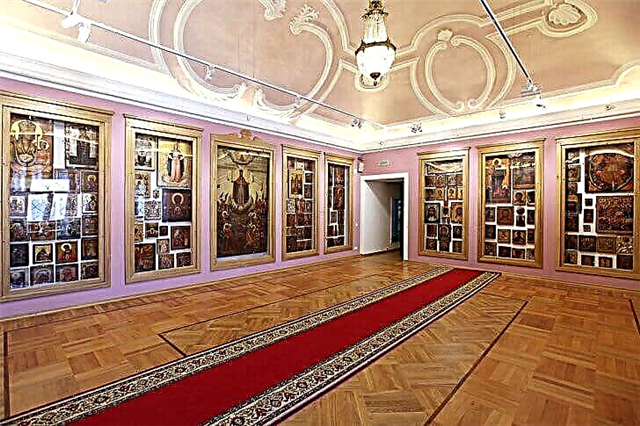
Spaso-Bethany monastery
The former men's monastery, which since 2002 has become the courtyard of the Trinity-Sergius Lavra. The architectural complex of the monastery took shape in the 18th - 19th centuries. At the beginning of the 20th century, monks owned vast lands, a brick factory and were engaged in the construction of tenement houses. In the 1920s, the monastery was abolished; later, many buildings were destroyed and rebuilt. Monastic life resumed in the 2000s.

Chernigov skete
The Gethsemane Chernigov Skete is located a few kilometers from Sergiev Posad. It was created in the middle of the 19th century. The architectural complex consists of the Chernigov temple and a cave church with a refectory located under it. At one time, the skete was visited by many pilgrims as well as the Lavra. People came to take water from the holy underground source and ask the monks for blessings.

Desert of Saint Paraclete
The hermitage is located near Sergiev Posad in the village of Smena and is the skete of the Trinity-Sergius Lavra. It was founded in 1958 by the monks of the Chernigov Skete, who yearned for even greater solitude for communion with God. The main buildings of the community were built in the late 19th - early 20th centuries. The bell tower, a brick residential building and several wooden cells have survived to this day.

Source of the Monk Savva Storozhevsky
Savva Storozhevoy is one of the students and associates of Sergius of Radonezh. He spent almost his entire life in the Trinity-Sergius Lavra, fully devoting himself to service. According to legend, it was thanks to him that a holy spring came from the bowels of the earth in the vicinity of the monastery. In the 1990s, a wooden chapel was built on the bank of the stream and a bathing font was equipped, which is now visited by many tourists.

Rattle key

Museum-reserve "Abramtsevo"
The former manor house, which once belonged to the writer S. T. Aksakov, where N. V. Gogol, I. S. Turgenev, I. E. Repin, I. I. Levitan and other famous personalities visited. After nationalization in 1917, it was turned into a museum. The complex consists of buildings of the XVIII-XIX centuries, a park and several exhibitions containing more than 25 thousand items that belonged to residents and guests of Abramtsevo.

Blinnaya Gora observation deck
The observation deck offers the best view of the Trinity-Sergius Lavra, which is why it is the most popular in the city. There are always a lot of tourists here on weekends. The name comes from the name of the hill where pancakes were baked in tsarist times and where residents and pilgrims of all classes gathered. The observation deck was equipped during the Soviet era in preparation for the 1980 Olympics.




